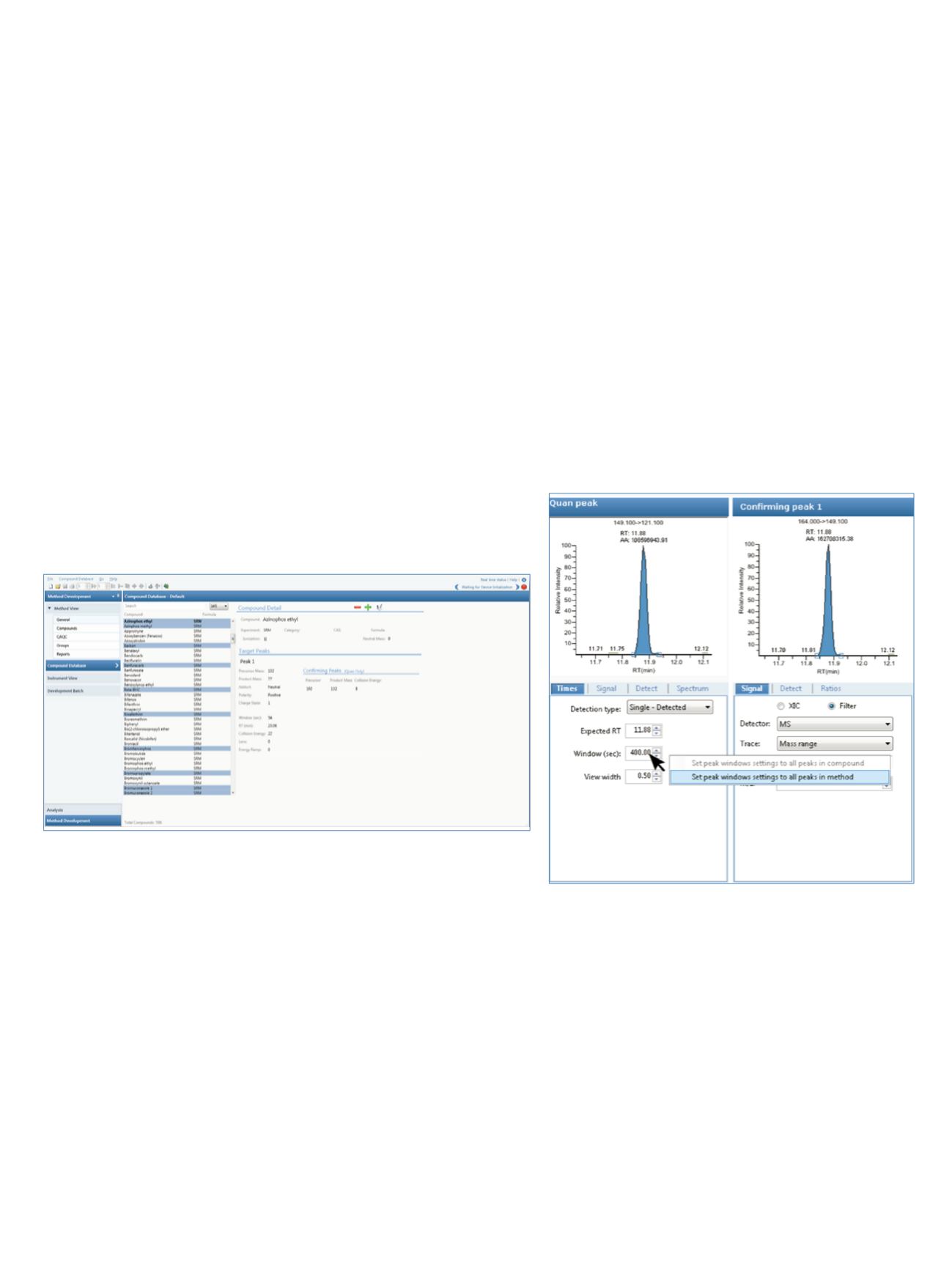

2
Using the Startup Kit
Starting Point 1: Starting from Scratch
When creating your method within Thermo Scientific
™
TraceFinder
™
EFS software, the instrument control and
data processing software included with the TSQ 8000
Pesticide Analyzer, the use of the TraceFinder Pesticide
Compound Database (CDB) will greatly simplify
the method development process. Multiple transitions for
each compound in the database have been optimized
on the TSQ 8000 instrument with AutoSRM to within
± 1 eV of the optimum collision energy.
Simply select the compounds of interest in the CDB
(Figure 2). This will create not only the TraceFinder
software processing method, but also the TSQ 8000 mass
spectrometer acquisition list. Since the instrument employs
Timed-SRM, SRM windows for data acquisition will be
centered on your retention times, so that all peaks elute
far from acquisition-window breaks. The complete
step-by-step procedure, including software screen
captures, is detailed in the
TSQ 8000 Pesticide Analyzer
Installation Guide
, which is also included with the TSQ
8000 Pesticide Analyzer.
After selecting your compounds of interest, you are now
ready to acquire samples in MRM with your TSQ 8000
instrument.
Starting Point 2: Starting from an Established
GC Method
If you already have a preferred GC method, and know
the retention times of your target compounds, you can
update the pesticides in the CDB with the known retention
times. Next, simply select the compounds you are
interested in analyzing from the updated CDB, as shown
in Figure 2. Again, this will create both the TraceFinder
EFS processing method and the TSQ 8000 system
Timed-SRM acquisition list, with acquisition windows
centered on the retention times of the target peaks.
If you do not know exact retention times, you can easily
widen acquisition windows while in TraceFinder EFS
software for all compounds (Figure 3) to ensure your
peaks fall within their acquisition window. Now update
your TraceFinder EFS software method with the new
retention times as you would in a normal data review, and
your acquisition windows will be centered on each
compound. After updating the retention times, follow the
same step to reduce acquisition windows back to defaults
in order to maximize dwell time for the analysis.
Figure 2. Selecting compounds from the TraceFinder EFS Compound Data Base. This will populate both
your TraceFinder Processing Method and your acquisition list. For more information on creating TSQ 8000
methods with the TraceFinder CDB, see
AB52300: Thermo Scientific TSQ 8000 GC-MS/MS Method Sync
.
Figure 3. Widening acquisition windows in TraceFinder EFS software to find
peaks with unknown retention times.



















